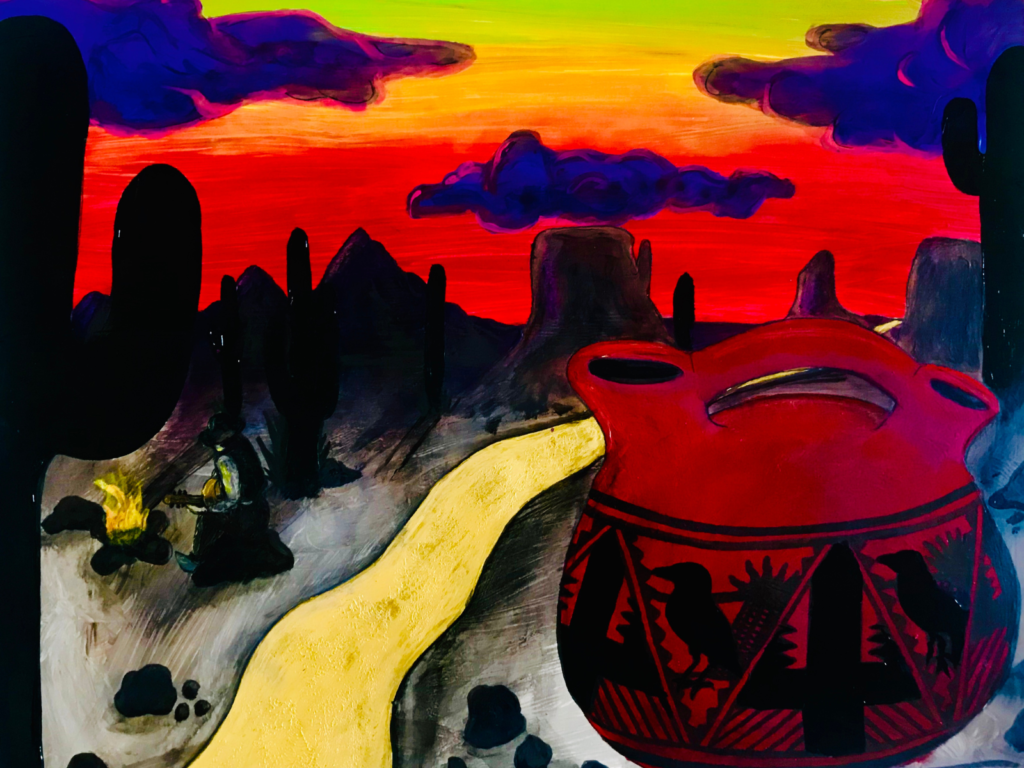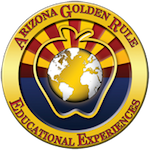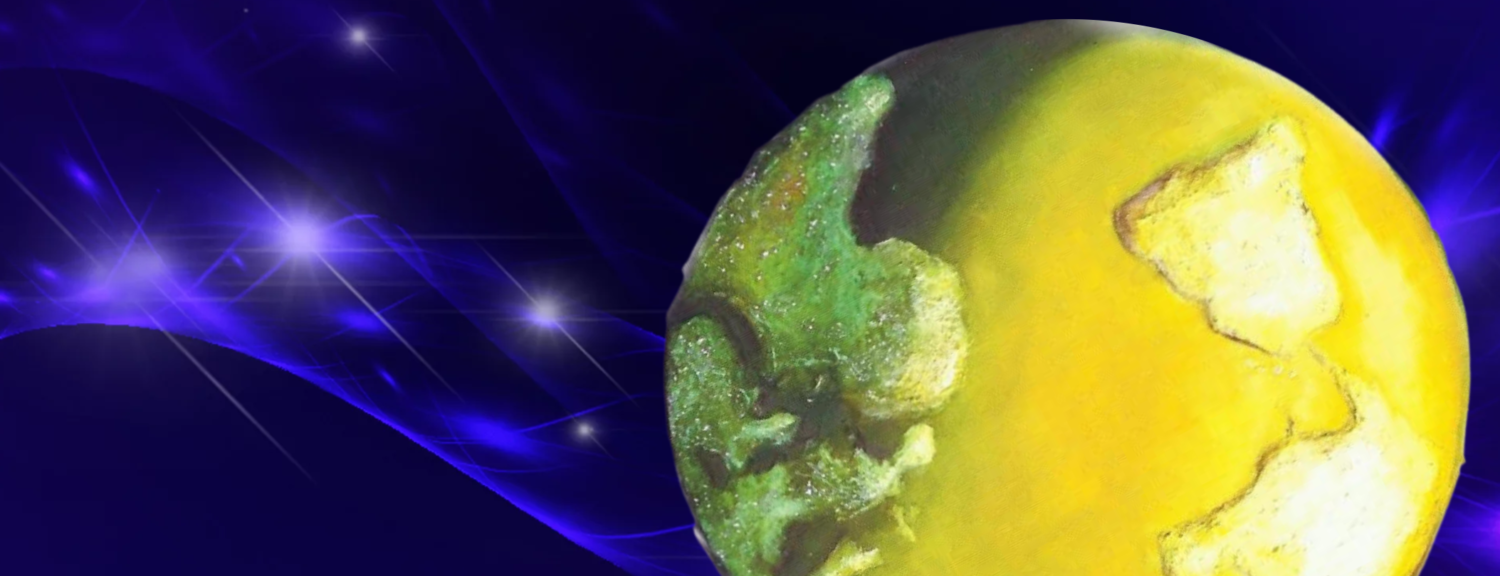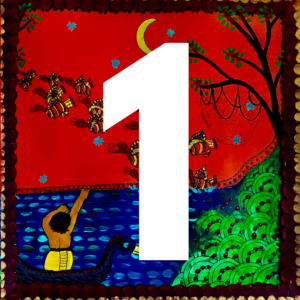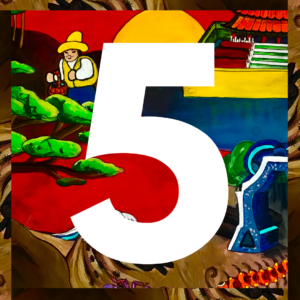“Stars Shine Brightly” is an arts resource, complete with world folk tales and original music, developed for grade levels K-5. Activities are for the classroom and include: Storytelling, Music, Dance, Theater, and Visual Art. “Stars Shine Brightly” is aligned with Arizona educational standards in ELA, World/Language, Arts; and Socio-Emotional competencies.

Second Grade Teacher Guides: Below are five sequential Second Grade cultural activities in Storytelling, Music, Theater, Dance, and Visual Art. Each activity begins with a group discussion (Prospecting for Gold) and ends with a class challenge (Golden Rule Challenge). As you use this resource in your classroom, your students will deepen their understanding of the Golden Rule, “Treating others the way they want to be treated,” through the life guiding principles of Kindness, Empathy, Respect, and Civility.
Arts Experience #1
Storytelling
AZ PO Strands
2.C4.1, 2.W.8, COM.N.1, 2.SL.1
Golden Rule Focus
Students will work together as a class to find solutions to problems.
Objectives
Civics (2.C4.1) Explain how people work together to identify and solve problems within our world.
Writing (2.W.8) Recall (write) information from experiences or gather information from provided sources to answer a question.
Communities (COM.N.1) Recognize a few letters or characters and learned words and phrases.
Speaking/Listening (2.SL.1) Participate in collaborative conversations with diverse partners and in small and larger groups. Follow agreed‐upon rules for discussions.
Materials
AGREE Website Resources: “Howdy Partner!” Audio Resource (on this page), “How Raven Solved a Problem” Resource, Civil Discussion
Additional Materials (per student): Long strips of scrap paper

Prospecting for Gold Consider rewarding students for their Golden Rule efforts by creating a jar for “gold nuggets” with a promised reward for filling it.
BEFORE YOU BEGIN…
Establish Civil Discussion in your classroom. The Civil Discussion guide uses the Golden Rule as an agreed upon standard of conduct that can be used to discuss a variety of topics (aligned with AZ State standard 1.SL.1-1.SL.5). To begin each Art Experience, use Civil Discussion guidelines while holding class discussions (“Prospecting for Gold”).
Prospecting for Gold: What does it mean to ‘live’ the Golden Rule?
Golden Rule Activity:
- “It’s time for a Golden Rule Experience! (Prospecting for Gold) What does it mean to ‘live’ the Golden Rule?
- Bring in a current event that involves people working together in the community to solve a problem (E.g., A schools or community outreach event or service).
- Share that current event with your class and help them understand the problem. If the solution is included in the current event, share that solution with your class after the discussion.
- “We are all part of a community and problem solving together is important.” Have students think-pair-share to discuss possible solutions to the problem.
- After students discuss in pairs, discuss the possible solutions to the problem as a class. Share the solution in the current event with your class and compare with your class solutions.
- “When addressing problems, it is important to be a good communicator and listener as we work together to solve a problem.” Teach your students three communication skills: Slowing down, Repeating back, and using Body gestures. Use the following activity:
- Step 1: Slow down Ask one student to share/communicate a short story (any topic) talking as fast as they can. Now have them tell the story again, but this time more slowly. “Slowing down helps others understand you more fully.”
- Step 2: Repeat back Ask a student a question and then repeat some of their words back to them and ask them, “Did I hear you correctly?” “Repeating back what someone says helps them know you heard them correctly.”
- Step 3: Body gestures Have two students stand in the front. Instruct that they will model two styles of listening.
- Active Listener: Instruct this student to nod their head occasionally to show they are listening and keep eye contact with you.
- Distracted Listener: Instruct this student to look around the classroom with their eyes only, holding still and looking bored.
- Talk to the students about a class topic (i.e., the class schedule) and have them model the different listening styles. “Our body language communicates to others whether or not we are listening.”
- “While communicating someone is speaking and someone is listening.” Ask kids to pair up and take turns being the communicator and the listener. You may pick one of the following topics or create your own:
- What foods do you like to eat?
- What types of things do you like to do for fun?
- What is a pet you would like to have?
- As a class, invite your students to share how it felt to talk to each other that way. Ask, “What did you like about it?” (e.g., I felt important) and “How is listening part of living the Golden Rule?” (e.g., treating others to something I like).
Telling the Story:
- “The setting for this story is our own state, Arizona! Here in the early days of our state, one of the phrases used to greet a friend was “Howdy Partner!” (For a western accent example, play “Howdy Partner!” Audio Resource (on this page).
- “This is a friendly way we can greet each other in our classroom as we are learning about this story!” Have students turn to their neighbors, wave and say “Howdy partner!”
- “In our story, Raven was a very friendly critter and when she saw a problem, she helped solve it.”
- Optional: Share a personal experience where you saw someone with a problem and you helped them solve it. (e.g., someone lost a pet, dropped their books, etc.)
- “In this story, the desert critters survive by working together to solve a problem.” Read or play “How Raven Solved a Problem” Resource. After reading the story ask, “What ways did the desert animals work together?”
- “The Desert Critters had a big problem. Every day we face our own problems. We can solve some of them by ourselves, but with big problems we might need some help.”
- Have students get into small groups. Teacher choice to assign each group a problem to solve or let them choose from the following list:
- Rabbit has lost their book in a dried river bed.
- Quail is separated from their family by a big rock.
- Javelina has sticky sap in their fur and wants to look good for the party.
- Gecko is stranded in the middle of a river on a log.
- Write the Golden Rule Challenge on the whiteboard or print to post and display it somewhere visible in the classroom. Read the Golden Rule Challenge as a class, “I will listen to my classmates and work together to solve problems.”
Golden Rule Challenge: I will listen to my classmates and work together to solve problems.
Arts Experience #2
Music
AZ PO Strands
2.MU.CR.1a, COM.N.1, 2.SL.1
Golden Rule Focus
Students will discuss how they should treat things that belong to the classroom.
Objectives
Music Creating (2.MU.CR.1a) Improvise rhythmic and melodic patterns and musical ideas.
Communities (COM.N.1) Recognize a few letters or characters and learned words and phrases.
Speaking/Listening (2.SL.1) Participate in collaborative conversations with diverse partners and in small and larger groups. Follow agreed‐upon rules for discussions.
Materials
Agree Resources: “Getting a wiggle on” Audio Resource (on this page), “Get up and Put ‘em Pebbles in” Music Resources, Golden Rule Compass Visual Resource
Additional Materials: handheld instruments enough for all students (shakers, washboard, claves, etc)

Cultural Focus

Colloquial Expression Audio Resource
Prospecting for Gold: How have you helped find solutions to problems at home or at school?
Golden Rule Activity
- “It’s time for a Golden Rule Experience! (Prospecting for Gold) How have you helped find solutions to problems at home or at school?“
- Ask for two volunteers. Invite volunteers to find two items and bring them to the front of the classroom: one item that belongs to them personally and one item that belongs to the classroom.
- While they are gathering items, say, “Today we are going to talk about the Golden Rule and how we treat things.”
- Invite these students to bring their two items and stand in front of the classroom.
- Ask each student to answer the following question about their personal item, “If someone borrowed your item, how would you want it treated?” (e.g., carefully, don’t break it, give it back in the same condition).
- After they answer, ask each student to answer the following question about their classroom item, “How would you want this item to be treated?” Since their answers will vary, guide them to wanting classroom items to be treated the same they treat their items.
- “The things that belong to the classroom belong to everyone the class. What are some reasons to treat classroom items like our personal items?” List student ideas on the board.
Singing the Song:
- “We will now learn a song. This song was written in the style of the Old-Time Southwest Cowboy. Let’s listen! What instruments do you hear?”
- Play the beginning of the song “Get ‘up and Put ‘em pebbles in” Music Resources. After listening, ask students to identify the instruments they heard. Instruments include:
- harmonica
- jaw harp
- guitar
- violin
- banjo
- water jugs
- Say “Now…are you ready to get your wiggle on?” Explain that get your wiggle on is an old phrase that means get up and move.
- Have students stand up next to their desk. You will guide them through simple movements to the beat of the music. Play “Get ‘up and Put ‘em pebbles in” through the end of the first chorus and do the following movements.
- Intro: Pretend to play the harmonica
- Narration: Pat their legs and snap twice (repeat throughout narration)
- Chorus (8 counts of each of the following movements):
- Hands on thighs and bounce
- Clap
- March in place
- Play the rest of the song for your students. Encourage them to move their body throughout the song, making up their own movements as inspired by the music.
- Write the Golden Rule Challenge on the whiteboard or print to post and display it somewhere visible in the classroom. Read the Golden Rule Challenge as a class, “I will treat things that belong to the classroom the same way I would like my own things treated.“
Golden Rule Challenge: I will treat things that belong to the classroom the same way I would like my own things treated.
Arts Experience #3
Theater
AZ PO Strands
2.TH.CR.3b, 2.RL.3, 2.SL.1
Golden Rule Focus
Students will face a group challenge and learn to focus on what they can do to help everyone win.
Objectives
Theater Creating (2.TH.CR.3b) Adapt and use sounds and movements in a guided theatrical experience.
Reading Literature (2.RL.3) Describe how characters in a story respond to major events and challenges.
Speaking/Listening (2.SL.1) Participate in collaborative conversations with diverse partners and in small and larger groups. Follow agreed‐upon rules for discussions.
Cultural Focus

Prospecting for Gold: How have you been treating things that belong to the classroom?
Reading the Script:
- “It’s time for a Golden Rule Experience! (Prospecting for Gold) How have you been treating things that belong to the classroom?“
- Distribute a printed script to each student “Drop and Plop” Script Resource or project the script for students to read along.
- “Melodramas were very popular in the early days of Arizona. Actors used big body movements and facial expressions to entertain crowds. In these plays, there are three types of characters: the hero, the distressed, and the villain.”
- Select three students to be the three types of characters:
- the hero
- the distressed person
- the villain
- Optional: Have a costume piece (i.e., cowboy hat, mustache, handkerchief) to identify which character they are.
- “In Melodramas the audience participates! When the hero speaks, the audience cheers. When the distressed person speaks, the audience sighs. When the villain speaks, the audience boos and hiss.
- Invite the students portraying characters to say the following statements and do the actions in parenthesis. Have your class respond in Melodrama Fashion, while still using respectful inside voices.
- Hero- “I’m here to save the day!” (Wave to the class)
- Distressed Person- “Woe is me!” (Put hands on their face/cheeks)
- Villain- “I’m here to make trouble!” (Put hands on their hips)
- Assign the main roles to strong readers and anyone without a role will be a critter.
- Read the script “Drop and Plop” Script Resource. After reading the script, ask your students how their characters responded to the following conflicts:
- No water
- Croakie knocking over the jug
- Scorpo the villain causing trouble.
- After students have shared their answers, ask, “How did everyone win?” Then say, “If we live he Golden Rule in our classroom while facing challenges, everyone can win.”
- Write the Golden Rule Challenge on the whiteboard or print to post and display it somewhere visible in the classroom. Read the Golden Rule Challenge as a class, “When we are faced with a group challenge, I will focus on what I can do to help everyone win.”
Golden Rule Challenge: When we are faced with a group challenge, I will focus on what I can do to help everyone win.
Arts Experience #4
Dance
AZ PO Strands
2.DA.PR.5c, 2.SL.1, COM.N.1
Golden Rule Focus
Class will discuss creating a safe spaces for everyone’s differences.
Objectives
Dance Performing (2.DA.PR.5c) Repeat movements with an awareness of self and others in space.
Speaking/Listening (2.SL.1) Participate in collaborative conversations with diverse partners and in small and larger groups. Follow agreed‐upon rules for discussions.
Communities (COM.N.1) Recognize a few letters or characters and learned words and phrases.
Materials
AGREE Resources:
“Yawnin’ the hours away” Audio Resource (on this page), “Get up and put ‘em pebble in” Music Resource, Raven’s Line Dance and Critters’ Rap Video Resource
Cultural Focus

Colloquial Expression Audio Resource
Prospecting for Gold: What challenges have we faced as a class? Did you do something to help? What did you do to be part of the solution?
Doing the Dance:
- “It’s time for a Golden Rule Experience! (Prospecting for Gold) What challenges have we faced as a class? Did you do something to help? What did you do to be part of the solution?“
- “Since we live the Golden Rule, instead of ‘yawning the hours away,’ we are going to get up and do a line dance!” Create a space in your classroom that allows for movement.
- “We will be learning two dances: Raven’s Line Dance and the Desert Critter Rap. To be successful, everyone will need to work together.”
- Raven’s Line Dance: (Raven’s Line Dance and Critter’s Rap Video Resource)
- FIRST Move to the right (grapevine step): Step right, step left behind right, step right and then step left foot next to the right foot.
- SECOND Move to the left (grapevine step): Step left, right behind left, step left and step right foot next to the left foot.
- THIRD Move forward (scooting step): Step forward right, touch left foot to right, step forward right, touch left to right all while pretending to swing a lasso.
- FOURTH Move back (walking step): Walk back left, right, left and clap.
- FIFTH Repeat steps 1-4.
- Critters’ Rap: (Raven’s Line Dance and Critters’ Rap Video Resource)
- FIRST Bounce to keep rhythm.
- SECOND In place (stomping step): stomp right, stomp left, and clap (after the lyrics “We’ve got your back”)
- THIRD IN place (stomping step): stomp right, stomp left, and clap (after the lyrics “We’ve got your back”)
- FOURTH Move to the right (sliding step): Slide to the right with your right arm in a hook position
- FIFTH In place (stomping step): stomp right, stomp left, and clap (after the lyrics “We’ve got your back”)
- SIXTH Repeat steps 2-5.
- Once you’ve practiced each dance, try them with the music! (“Get up and put ‘em Pebbles in” Resource).
- Raven’s Line Dance is first (cue song to :55)
- Critters’ Rap is second (cue song to 1:32)
- Putting it together! Once students are comfortable with the movement, divide the class in half. Half will do Raven’s Line dance and half will do the Critters’ Rap. The two dances will be done simultaneously. To prepare:
- Ask students to consider: How much space will I need to do these moves? How much space does my neighbor need?
- “It will require ‘trusting’ that everyone will move in the right direction at the right time.” Have students walk through their movements, ensuring they have enough room.
- Cue the song to 2:02 and have your class perform their dances. After the dance, say, “Just like the dances have differences, we all have differences (e.g., hobbies, talents, personalities). In our classroom we can make room for everyone’s differences.”
- Write the Golden Rule Challenge on the whiteboard or print to post and display it somewhere visible in the classroom. Read the Golden Rule Challenge as a class, “By building trust in our class, we can create a safe space for everyone’s differences.”
Golden Rule Challenge: By building trust in our class, we can create a safe space for everyone’s differences.
Arts Experience #5
Visual Art
AZ PO Strands
2.VA.CN.10a, 2.L2U1.9, 2.SL.1, COM.N.1
Golden Rule Focus
Students will learn specific things about other students in their class, treating them with Respect.
Visual Connecting (2.VA.CN.10a) Create works of art about events in home, school, or community life.
Life Science (2.L2U1.9) Obtain, analyze, and communicate evidence that organisms need a source of energy, air, water, and certain temperature conditions to survive.
Speaking/Listening (2.SL.1) Participate in collaborative conversations with diverse partners and in small and larger groups. Follow agreed‐upon rules for discussions.
Communities (COM.N.1) Recognize a few letters or characters and learned words and phrases.
Materials
AGREE Resources:
“I ain’t tellin’ any taradiddles” Audio Resource (on this page), “How to Treat a Cactus” Visual Resource, “Community Cactus” Print Resources (1-3)
Additional Materials (per student): Printed Cactus Art Resource, Scissors, Markers/Coloring Tools

Cultural Focus

Colloquial Expression Audio Resource
Prospecting for Gold: Do we trust each other in our classroom? Why or why not? What can help us trust each other more?
Golden Rule Activity 1:
- “It’s time for a Golden Rule Experience! (Prospecting for Gold) Do we trust each other in our classroom? Why or why not? What can help us trust each other more?“
- “Now I ain’t be tellin’ any taradiddles (meaning I am telling the truth!), Raven and her desert animals really did need water to survive. But what about a desert cactus? How much water does a cactus need to survive?”
- Display or project the “How to Treat a Cactus” Visual Resource.
- Read how each cactus likes to be treated.
- Read the things that are the same about all the cacti.
- Ask, “What are some ways we all like to be treated?” List ways that everyone in the classroom agrees on. (e.g., hugs, smiles, holding open the door, inviting me to play a game, sharing a toy).
- Point to the list of ways your class likes to be treated and say, “Let’s all try to treat each other in these ways. And like the cacti, let’s also learn about our differences.”
Creating the Art:
- Before beginning, choose a wall or bulletin board to create your Community Cactus. Consider adding a rocky ground for the cactus to “grow” from. You will begin the cactus art! Create an example of a cactus pad, with shapes and color, and place it at the bottom center of the designated area.
- “We are going to create a community cactus. The cactus shapes are basically the same, but you will use bright contrasting colors and shapes to make your cactus pad unique and different.”
- Each student picks a cactus pad from the three options “Community Cactus” Print Resource. Ask students to draw shapes on their cactus pad (squares, rectangles, circles, ovals, etc.) and color them in with bright colors.
- Invite students to cut out their cactus pads (around the spikes, no need to cut out each spike) and write their name on it.
- Have two students stand and show their crazy art cactus pads to the class. Compare and contrast their art: What are the similarities? What are the differences?
- Have them place/tape/glue their cactus pad next to your cactus pad, touching it and growing upwards or outwards.
- Think-pair-share Have students look at their neighbor’s cactus pad, and together find one thing that is similar and one things that is different on each cactus pad.
- Once students are done sharing with their partner, invite them add their cactus pad to the growing “Community Cactus”.
- Explain, “As a members of this class, we each add our “unique” part to this community cactus and to our classroom. It is important to learn about each other as we live the Golden Rule.”
- Write the Golden Rule Challenge on the whiteboard or print to post and display it somewhere visible in the classroom. Read the Golden Rule Challenge as a class, “Learning about other students in my class can help me live the Golden Rule better.”
Golden Rule Challenge: Learning about other students in my class can help me live the Golden Rule better.
Bulletin Board Idea: Create a desert landscape on a bulletin board, complete with mountain outline, desert plants and rocky soil. Students will add their created art to build a community prickly pear cactus. Put pictures or the names of each student around the bulletin board with space below each one. As a class, add unique things that you learn about each student. This can be used to encourage students to learn more about each other as they live the Golden Rule.
